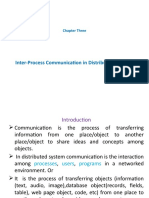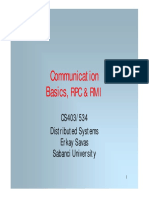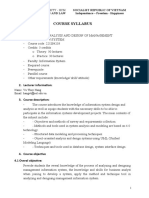0% found this document useful (0 votes)
27 views15 pagesUnit I - Communication Patterns
The document discusses various communication patterns in distributed systems, including Remote Procedure Call (RPC), Remote Method Invocation (RMI), Message Passing, Shared Memory, Publish Subscribe, Socket Programming, and Web Services (REST). Each pattern is described with its concept, key points, example use cases, pros, and cons. The document highlights the trade-offs of each method in terms of complexity, performance, and suitability for different scenarios.
Uploaded by
studybunkersCopyright
© © All Rights Reserved
We take content rights seriously. If you suspect this is your content, claim it here.
Available Formats
Download as PPTX, PDF, TXT or read online on Scribd
0% found this document useful (0 votes)
27 views15 pagesUnit I - Communication Patterns
The document discusses various communication patterns in distributed systems, including Remote Procedure Call (RPC), Remote Method Invocation (RMI), Message Passing, Shared Memory, Publish Subscribe, Socket Programming, and Web Services (REST). Each pattern is described with its concept, key points, example use cases, pros, and cons. The document highlights the trade-offs of each method in terms of complexity, performance, and suitability for different scenarios.
Uploaded by
studybunkersCopyright
© © All Rights Reserved
We take content rights seriously. If you suspect this is your content, claim it here.
Available Formats
Download as PPTX, PDF, TXT or read online on Scribd
/ 15



































































































